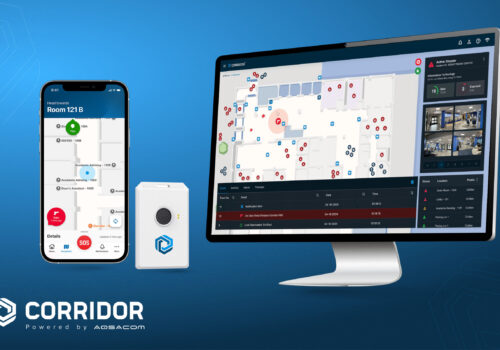Manhattan Tragedy Sparks Demand for Smarter Safety
07/28/2025

Why Timely Crisis Notifications Save Lives
When an active shooter enters a building, every second counts. Delays in alerting occupants, guiding them to safety, and coordinating with first responders can mean the difference between life and death. The Midtown Manhattan shooting on July 28, 2025, made this reality tragically clear. Although the shooter entered the building around 6:28–6:30 p.m., the first alert wasn’t issued until 6:52 p.m.—after the shooter had already taken his own life. This 20-minute delay underscores the urgent need for faster, smarter emergency response systems.
A Breakdown of the Incident
At approximately 6:28–6:30 p.m., the shooter entered 345 Park Avenue and opened fire, killing an NYPD officer and two civilians in the lobby. He then proceeded to the 33rd floor via elevator, where he fatally shot a fourth victim. Between 6:40 and 6:45 p.m., the shooter died by suicide in a stairwell or office.
Despite the threat being neutralized, critical notifications were significantly delayed:
- 6:52 p.m. – “Gunfire reported” alert sent—20 minutes after the first shots, and 7 minutes after the shooter’s death.
- 7:06 p.m. – “Shelter in place” alert issued—nearly 34 minutes after the shooter entered and 20 minutes after the threat ended.
- 7:15 p.m. – Shooter’s body discovered by police.
- 7:30 p.m. – Scene officially declared secure.
These delays highlight a severe breakdown in emergency communication. Alerts were issued far too late—after the event had already concluded—leaving building occupants uninformed and first responders without real-time situational awareness.
Where Corridor Could Have Made the Difference
Proactive Detection & Instant Notifications
- Location-based incident reporting with tip sharing would have enabled occupants to submit real-time information—videos, voice notes, photos, and incident descriptions.
- Advanced video analytics could have detected an armed intruder at the point of entry, triggering immediate alerts to operators and emergency personnel.
- Smart, location-aware notifications would have delivered evacuation or lockdown instructions tailored to each person’s proximity to the threat.
Smart Evacuation
- Corridor’s proprietary Indoor Positioning System (IPS), paired with a 3D digital map and real-time incident markers, enables dynamic evacuation guidance. Users can always see their exact location in relation to the threat and nearby safe zones.
Two-Way Communication
- Corridor’s platform allows users to report shooter movements, confirm key developments (such as the shooter’s suicide), and communicate directly with a central operator.
- First responders receive live updates and situational data, allowing them to act faster and more effectively.
Corridor Indoor Positioning System (CIPS)
- During an active threat, Corridor IPS can identify the locations of remaining occupants, detect injured individuals, and help guide responders directly to them.
- Once the situation is resolved, users would immediately receive a clear “incident resolved” message—eliminating confusion and restoring calm.
Faster Action, Greater Clarity
With Corridor’s location-based alerts and continuous situational awareness:
- Occupants could have been guided away from danger before the shooter reached the 33rd floor.
- The shooter’s death could have been confirmed in real time, preventing unnecessary panic.
- First responders could have begun evacuating or treating victims sooner and more strategically.
Bringing Smarter Safety to Every Building
If your organization is evaluating technologies for active shooter or emergency incident response, Corridor offers a comprehensive suite of solutions tailored to modern safety challenges:
- Location-based incident reporting with integrated tip sharing (video, audio, notes, images, incident type).
- Instant, real-time emergency notifications based on user location.
- Smart evacuation support powered by digital 3D mapping and proprietary Indoor Positioning System (IPS).
- Two-way communication between users, operators, and first responders.
- Seamless integration with existing security systems, such as CCTV and mapping platforms.
Conclusion
Now is the time to act. Click here to discover how Corridor can help transform potential tragedies into preventable threats.
*This blog post is based on publicly available information from The Wall Street Journal and The Guardian. Further details may emerge as first responders continue their investigation.



